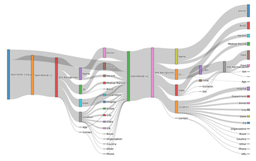Rethinking Heat Early Warning Systems: A Personalised Approach for Older Adults
Published in Public Health, Anatomy & Physiology, and Mathematics

Explore the Research

A digital heat early warning system for older adults - npj Digital Medicine
npj Digital Medicine - A digital heat early warning system for older adults
As the global population ages, in conjunction with a desire to age in-place, and extreme heat events become more frequent and severe, the risk of exposure to indoor overheating in this specific at-risk population continues to grow.
To mitigate the population-wide health burden of extreme heat, Heat Early Warning Systems (HEWS) have been implemented worldwide. These systems leverage climate and weather forecasts to issue public advisories, where within a broader heat action plan, public health interventions are initiated. However, despite their demonstrated ability to reduce heat-related mortality, population-based HEWS have inherent limitations when it comes to assessing an individuals’ heat exposure.
The Limitations of Population-Based HEWS
Most HEWS rely on outdoor temperature as a proxy for actual heat exposure. However, this approach does not account for indoor temperatures, which can differ substantially from those recorded outdoors. Given that older adults spend up to 90% of their time indoors, this limitation has the potential to result in inaccurate risk assessments.
Furthermore, HEWS assume uniform heat exposure for all individuals within a given city or suburb, despite evidence that heat exposure can vary significantly within urban areas. In regions like southeast Queensland, Australia, HEWS alerts are only triggered following a Bureau of Meteorology issued heatwave alert. This definition requires an unusually hot three-day period, meaning shorter periods of extreme heat may not prompt official warnings. This shortcoming is highlighted by the fact that hot weather—even outside of heatwaves—significantly increases mortality. Finally, HEWS provide broad advice, like “seek air conditioning,” which fails to account for the availability or accessibility of cooling options - these limitations underscore the need for a more precise, individualised approach.
Developing an Individualised HEWS
To address the shortcomings of population-based HEWS, we developed an individualised, household focussed HEWS for older adults (≥65 years). This aligns with the United Nations call – “Early warnings for all”, to improve the existing warning systems and enhance community resilience in the face of climate change.
The Extreme Heat and Older Persons (Ethos) system:
- Measures Real-Time Indoor Heat Exposure – Rather than relying solely on outdoor temperatures, our system continuously monitors indoor thermal conditions, providing a more accurate assessment of personal heat exposure.
- Predicts Core Body Temperature – Using a predictive model based on personal characteristics such as age, sex, height, and weight, our system estimates an individual's core body temperature in response to their indoor heat exposure (Forbes et al., 2025). The Ethos system continually forecasts core body temperature responses across the forthcoming 9-hours, using the real-time environmental conditions. If the predicted magnitude of increase in core body temperature over the forthcoming 9 hours was elevated, the Ethos system issued a heat alert to participants, using a ‘traffic light’ system where yellow indicated modest, and red indicated high projected increases in core temperature.
- Recommends Accessible Cooling Measures – During periods of indoor overheating accompanying the tiered heat alerts, the system suggests practical, accessible cooling strategies tailored to the individual’s environment and needs.
Watch the participant experiences here.
What worked and what didn’t work
Results from our pre- to post-trial survey indicated that the utilisation of the Ethos system resulted in increased heat preparedness among the 78 participants across the 3-month summer period. Similarly, participants indicated they were more aware about their in-home conditions and reported the ‘usability’ of the system was ‘above average or near good’ on the System Usability Scale. Together, likely contributing to participants reporting acting upon ~90% of all Ethos-system issued heat alerts.
Despite participants reporting acting upon Ethos-system issued heat alerts, participants’ awareness and perception of heat-health risks did not increase, nor did participants report significant increases in uptake and utilisation of personal cooling interventions. Nonetheless, qualitative evidence suggests that individuals may have been more efficient in their utilisation of cooling interventions (e.g., air-conditioning maintained to a higher set-point in conjunction with electric fans), utilised spatial and temporal data to support their activities in and out of the home, and some participants tried new cooling measures as a result of their trial participation. Further, for some participants the system prompted them to use cooling available (like air conditioning) when they might have otherwise been reluctant (e.g., ‘it gave me permission to turn on my air-conditioning').
Conclusion and future directions
In conclusion, the development of the Ethos system represents a significant advancement in addressing the limitations of population-based HEWS, particularly for heat at-risk populations such as older adults. By measuring real-time indoor heat exposure, predicting core body temperature responses, and recommending tailored cooling strategies, Ethos provides a more personalised approach to managing heat-related health risks. The system’s ability to increase heat preparedness among participants, as evidenced by positive feedback on its usability and high compliance with heat alerts, suggests its potential to improve heat resilience and potentially reduce adverse health outcomes. However, challenges remain in fully translating heat alerts into increased uptake of cooling interventions, indicating a need for further improvements in behaviour change strategies and accessibility of cooling options. Overall, the Ethos system highlights the importance of personalised interventions in mitigating the health impacts of extreme heat, offering valuable insights for future heat-health strategies. Future research should investigate the long-term impact of Ethos system use on behavioural adaptation to heat, including assessing the barriers and facilitators to the uptake and utilisation of personal cooling interventions, and whether repeated exposure to personalised heat alerts fosters sustained changes in cooling practices. A randomised controlled trial comparing health metrics (such as emergency department visits, heat-related symptoms, and/or physiological strain) between those using the Ethos system and those receiving standard population-based heat alerts is warranted. Additionally, collaborations with public health agencies and community organisations could facilitate broader implementation and assess the feasibility of scaling the system for widespread adoption in diverse settings.
To find more about our research- please read it here.
Follow the Topic
-
npj Digital Medicine

An online open-access journal dedicated to publishing research in all aspects of digital medicine, including the clinical application and implementation of digital and mobile technologies, virtual healthcare, and novel applications of artificial intelligence and informatics.
Related Collections
With Collections, you can get published faster and increase your visibility.
Artificial Intelligence in Emergency and Critical Care Medicine
Publishing Model: Open Access
Deadline: Jan 10, 2026
Digital Health Equity and Access
Publishing Model: Open Access
Deadline: Mar 03, 2026




Please sign in or register for FREE
If you are a registered user on Research Communities by Springer Nature, please sign in